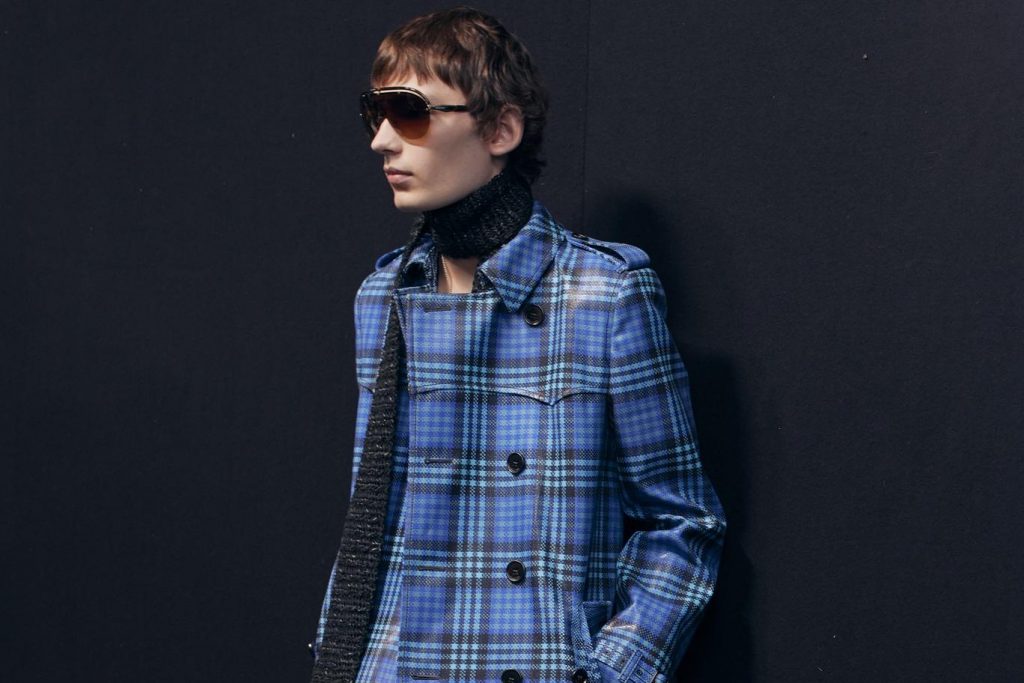While a rapid exchange of head designers shook up the luxury fashion industry this season, a number of brands have been working their way back into mainstream conversation through a return to archival fabrication, silhouettes and branding materials.
From Jonathan Anderson’s change of Dior’s current logo, which now more closely resembles the brand’s original typeface featuring a serif font and exclusively capital “D,” to Daniel Lee’s fresh interpretation of Burberry‘s classic plaid fabrication integrated into new styles, the new faces behind some of the industry’s biggest luxury retailers are returning to the markers that made up respective brand’s original DNA—reinfusing heritage into modern design for a new audience.
Now, besides the obvious safety net that comes along with sticking closely to the already-existing brand identity of a classic luxury giant, there are individual societal factors driving the current emphasis on brand heritage.
“It has to do with the market and the fact that the consumer is not there any longer,” said Thomaï Serdari, a luxury marketing and branding strategist and director of the Luxury & Retail MBA program at New York University, in an interview.
“We have seen tremendous decrease in sales and uncertainty about how to get consumers interest and this has been unraveling because it has to do with a lot of even geopolitical events that are happening, not only here, but also in Europe. And then on top of that, you have something else that is happening concurrently, and that is that there is a lot of noise on social media. The trends have accelerated, and there is always someone chasing the next trend, which even luxury brands did in the last 10 years. And so, when consumer appetite decreased for their product, they realized that the safest way forward is to actually retreat and go back to the original DNA of the brand.”
In addition to brand fatigue, Serdari cited younger consumer’s affinity for archival fashion as a reason behind this shift—especially given the demographic was not made up of independent consumers when the majority of brands released many of these now referenced designs originally.
“Here is where we see the generation split, because older consumers have the experience of having seen these brands evolve,” she said. “But a younger consumer, especially because Gen Z consumers are very much about rediscovering materiality, rediscovering decades of the previous millennium, very nostalgic about things, they are eager to see something from the archives.”
Another factor key to understanding the success behind archival reproduction: emotions. As emotions continue to remain a key driver in the purchasing behavior of younger generations, even the oldest brands’ success depends on the consumer’s emotional engagement. Data from a predictive report done by trend forecasting service WGSN supports this, reiterating the point using the concept of ‘witherwill’ as an indicator of how consumers will desire ease, comfort and familiarity regarding the future of consumables, saying, “Witherwill—a word coined by John Koenig, author of the Dictionary of Obscure Sorrows—is defined as a longing to be free from responsibility, and it will be a key consumer emotion and coping mechanism in 2027 as people grapple with pressures on multiple levels.
The report goes on to say that, “Witherwill will be a reaction against the great exhaustion, with workplace and digital stressors creating a pervasive sense of burnout and overwhelm. As people push back to explore a slower existence with lower stakes, fewer to-do lists, more meaningful connections and less loneliness, brands have an opportunity to offer them the respite they need.”
However, amid this heritage renaissance of sorts, there’s a tricky paradime that creative directors now have to navigate—balancing the art of keeping things classic while producing fresh, innovative new concepts.
“People who know good design know that you need to go back to the roots and then get inspired to create something new,” Serdari said, going on to describe Dior’s recent Lady Bag adaptation—which combines the brand’s fan-favorite silhouette with the creative vision of a select few artists tapped for the project—as a perfect example of respecting a brand’s legacy whilst remaining inventive.
“I thought, wow, how original and how fresh,” she said. “But it’s no different from the archival version of the brand. It’s just a fresh take on this very well known profile that I would recognize anywhere… So that is how you do it, right? You keep certain, elements, of the design that are yours, that you can defend, that they speak of the brand, and then you address other other aspects of design through innovation, perhaps in materials, perhaps in details, but you keep the skeleton in place so that the consumer is oriented back to the original DNA of the brand.”
In response to those who argue against archival recreation—claiming that it will only lead to the decline of original design and stifles the creativity of modern creative directors—Serdari objected to that criticism’s validity, saying, “Legacy brands have one primary mission to maintain, to preserve the legacy, if not what? What do they have? Just the name. That’s not enough, and so you cannot move too far away from your legacy. You have to always stay close. Are you simply repeating designs? No, that’s not correct either. But you need to take inspiration from what the true self of the brand has been, and then branch out according to what is happening outside of the brand, in society, in culture, nature, wherever each brand takes inspiration from.
“So I wouldn’t criticize that. I would criticize the critics because I think it’s not correct to move away from the true articulation of each brand’s DNA and identity.”

